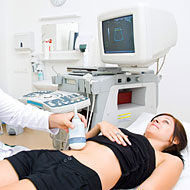- Male Infertility
- Male Infertility Symptoms
- Male Infertility Causes
- Infertility Tests
- Male Infertility Tests
- Infertility Treatment
- Male Infertility Treatment
- Female Infertility Symptoms
- Female Infertility Causes
- Female Infertility Tests
- Female Infertility Treatment
- Premature Ovarian Failure
- Unexplained Infertility
- Acupuncture for Infertility
- Egg donation
- Sperm Donation
Infertility in Females
A diagnosis of female infertility can be very traumatic for both a woman and her partner but nowadays, there are many treatments available that can help treat this condition. So how do you know if you have a fertility problem? When you are unable to conceive after a year of trying, you would need to visit a fertility expert to rule out infertility problems.
Keep in mind that recurrent miscarriages also come under the broad category of infertility problems. Most women who face problems with infertility and follow the recommended treatment course go on to have normal pregnancies. There are many causes of female infertility such as hormonal problems, lifestyle problems and even physical problems.
In many cases, there are no accompanying symptoms and so it may be tough to determine the root cause of the problem.
Female Infertility Symptoms
There are no specific female infertility symptoms. Studies in this area have shown that women who are infertile have had problems with their menstrual cycles, experienced pelvic pain, or even had hormonal problems. Some of the most common female infertility symptoms are therefore irregular menstruation, very heavy or very light bleeding during a period, painful intercourse ( this is due to endometriosis),PCOS and as mentioned above, hormonal problems. Symptoms of hormonal problems are excessive facial hair, as well as chronic acne. Frequent miscarriages are a symptom of female infertility too.
Causes of Female Infertility
There are several causes of female infertility. Some of these causes of female infertility are Polycystic ovary syndrome (PCOS), ovulation disorders, an inflammation of the fallopian tubes due to gonorrhea or Chlamydia, prolactin elevation, a pelvic adhesion (also referred to as a frozen pelvis), uterine problems like uterine fibrosis (where there is a benign tumor in the wall of the uterus), cervical stenosis (a blockage or narrowing of the cervix), endometriosis, tubal infertility or damage to the fallopian tubes. Other causes include eating disorders, excess body weight, smoking, sperm allergy and so on.
Female Infertility Tests
There are a few female infertility tests one can undergo to diagnose the cause behind the infertility.
The woman may be asked to undergo a blood test or a urine test to check hormonal levels. Other female infertility tests include laparoscopy (where the doctor can view the ovaries, uterine lining, fallopian tubes and so on), ovulation testing, and ovarian reserve testing. Hysterosalpingography is an infertility test that checks the fallopian tubes and sees whether they are open or not. Hysterosalpingography and laparoscopy are two female infertility tests which help to detect both tubal obstruction and scar tissue.
Female Infertility Treatment
There are many options for female infertility treatment. These range from surgery to controlling one’s body weight to even taking certain medications. The more common female infertility treatments are In Vitro Fertilization (IVF), Intracytoplasmic Sperm Injection (ICSI), egg donation. Laparoscopy is recommended for those women who suffer with either pelvic or tubal diseases. Preimplantation Genetic Diagnosis (PGD) a method that is used in artificial insemination. Intrauterine insemination (IU) is a procedure in which semen is collected, and after it is rinsed with a specific solution, it is introduced into the uterus when the woman is ovulating.


